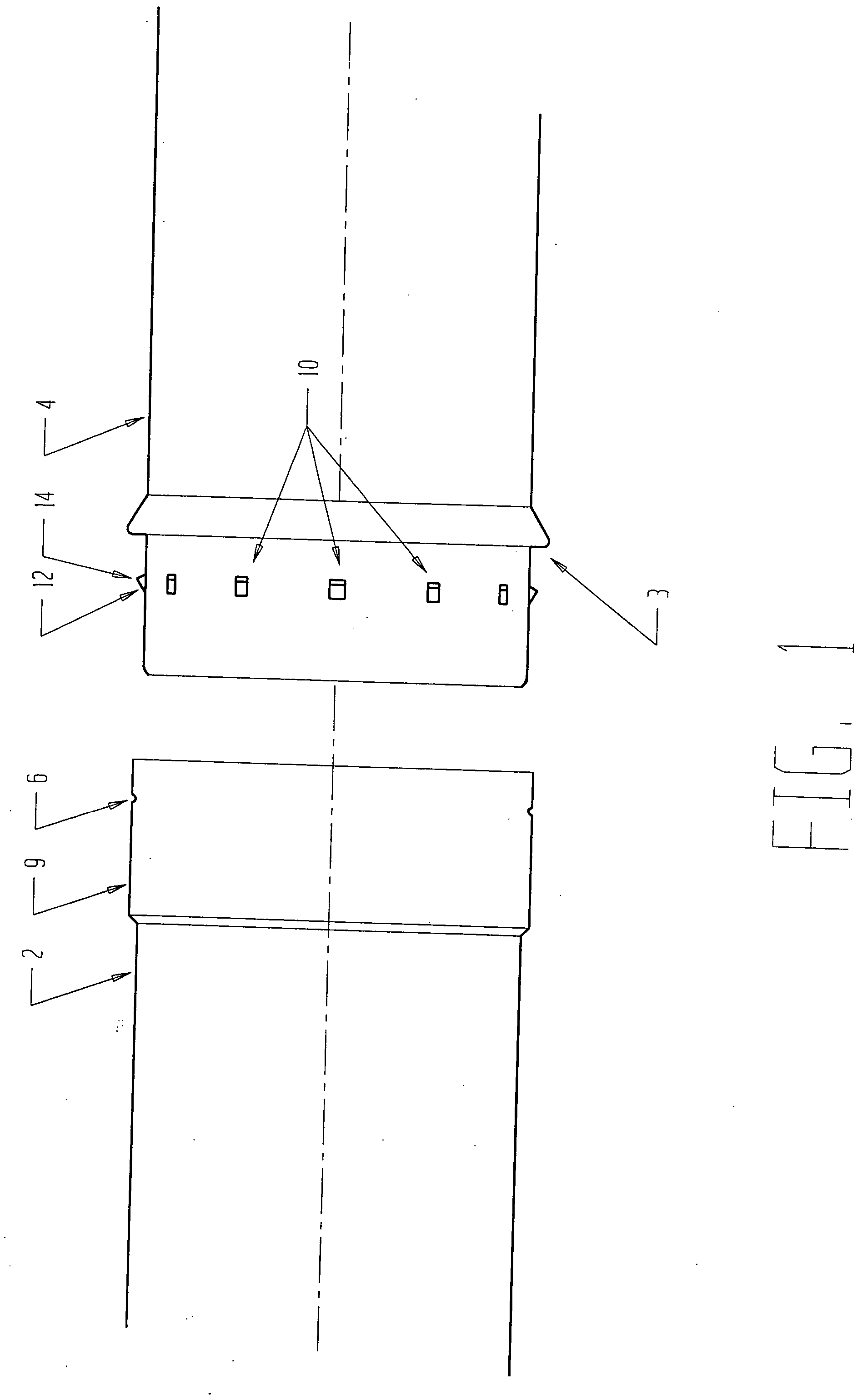Positive pipe interlock
a positive and interlocking technology, applied in the direction of combustion process, lighting and heating apparatus, combustion treatment, etc., can solve the problems of not holding the pipe in place, time-consuming and expensive, and the cost of an additional piece and the associated assembly time,
- Summary
- Abstract
- Description
- Claims
- Application Information
AI Technical Summary
Benefits of technology
Problems solved by technology
Method used
Image
Examples
Embodiment Construction
[0014] The present invention provides a method and system for positively joining two pipes. No additional parts are required to effectuate the positive interlock, which may, when the pipes are made of a suitable deformable elastically material such as sheet metal, be disassembled.
[0015] Referring to FIG. 1, two pipes made according to the principles of the present invention are shown. A first pipe 2 has one end expanded so it slides over the protrusion 10 of the second pipe 4 and has an indentation 6 about the perimeter. This indentation, in the case of pipe made from sheet metal, may easily be made in a rolling operation.
[0016] Spaced about the circumference of the end of the second pipe 4 are a number of protrusions 10 located so that, when the expanded size portion 9 of the first pipe 2 is sliding over the end of the second pipe 4, the protrusions 10 may slide tightly past the indentation 6. In the present example, the protrusions 10 are wedge shaped, with the thin edge of the ...
PUM
| Property | Measurement | Unit |
|---|---|---|
| perimeter | aaaaa | aaaaa |
| distance | aaaaa | aaaaa |
| thick | aaaaa | aaaaa |
Abstract
Description
Claims
Application Information
 Login to View More
Login to View More - R&D
- Intellectual Property
- Life Sciences
- Materials
- Tech Scout
- Unparalleled Data Quality
- Higher Quality Content
- 60% Fewer Hallucinations
Browse by: Latest US Patents, China's latest patents, Technical Efficacy Thesaurus, Application Domain, Technology Topic, Popular Technical Reports.
© 2025 PatSnap. All rights reserved.Legal|Privacy policy|Modern Slavery Act Transparency Statement|Sitemap|About US| Contact US: help@patsnap.com



